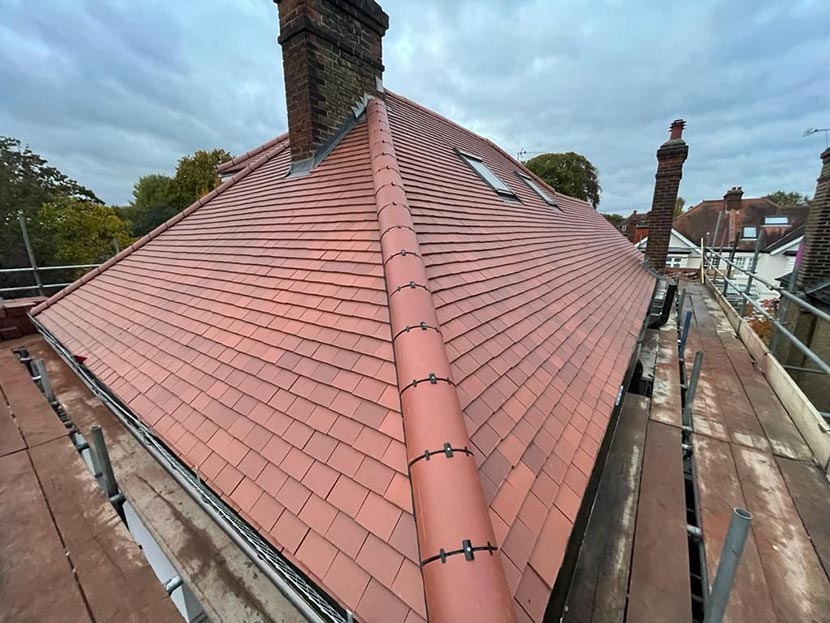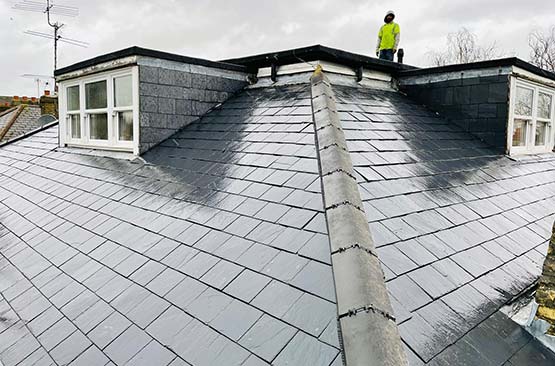Fitting and Installing A New Roof

Roof installation and fitting are critical aspects of building construction and home renovation. A properly installed roof ensures the protection of the structure from the elements, enhances energy efficiency, and adds to the overall aesthetic appeal of the property. This guide provides an in-depth look at the various stages of roof installation, the materials used, the importance of professional fitting, and the latest trends in roofing.
Planning and Preparation
The first step in any roof installation project is thorough planning and preparation. This involves assessing the existing structure, determining the appropriate roofing materials, and creating a detailed plan for the installation process.
- 1. Assessment: A professional roofer will conduct a comprehensive inspection of the existing roof structure. This includes checking for any damage, assessing the structural integrity, and determining if any repairs or reinforcements are needed before the new roof can be installed.
- 2. Material Selection: The choice of roofing materials is crucial. Common options include asphalt shingles, metal roofing, tiles, and wood shakes. Each material has its own set of advantages and disadvantages, depending on factors such as climate, budget, and aesthetic preferences.
- 3. Planning: Once the materials are selected, a detailed installation plan is created. This includes a timeline, a list of required materials, and safety protocols to be followed during the installation.
Removal of Old Roofing
In most cases, the old roofing material needs to be removed before the new roof can be installed. This process, known as tear-off, involves stripping away the existing shingles or tiles, as well as the underlayment, to expose the roof deck.
- 1. Tear-Off: The old roofing materials are removed carefully to avoid damaging the underlying structure. This is typically done in sections to ensure the roof remains protected during the process.
- 2. Inspection: Once the old materials are removed, the roof deck is inspected for any damage or rot. Any necessary repairs are made at this stage to ensure a solid foundation for the new roof.
Installation of Underlayment and Flashing
The underlayment and flashing are essential components of a roofing system, providing an additional layer of protection against water infiltration.
- 1. Underlayment: The underlayment is a water-resistant or waterproof barrier that is installed directly onto the roof deck. It provides an extra layer of protection against moisture and helps to prevent leaks. Common types of underlayment include felt paper and synthetic materials.
- 2. Flashing: Flashing is installed around roof penetrations such as chimneys, skylights, and vents. It is typically made of metal and is designed to direct water away from these vulnerable areas to prevent leaks.
Installation of Roofing Material
With the underlayment and flashing in place, the installation of the roofing material can begin. The process varies depending on the type of material being used.
- 1. Asphalt Shingles: The most common roofing material, asphalt shingles are installed starting from the bottom edge of the roof and working upwards. Each row of shingles overlaps the one below it, providing a watertight seal.
- 2. Metal Roofing: Metal panels or shingles are installed with screws or clips, starting from the eaves and working upwards. Proper alignment and secure fastening are crucial to ensure the longevity of a metal roof.
- 3. Tiles: Tile roofs, whether made of clay, concrete, or slate, are installed in a similar manner to shingles, with each row overlapping the one below it. Special care is taken to secure the tiles properly to withstand wind and weather.
- 4. Wood Shakes: Wood shakes are installed in overlapping layers, similar to shingles. However, they require additional spacing to allow for expansion and contraction due to moisture.
Ventilation and Insulation
Proper ventilation and insulation are essential for maintaining the longevity of a roof and the comfort of the home.
- 1. Ventilation: A well-ventilated roof allows heat and moisture to escape, preventing damage to the roof structure and reducing energy costs. Ventilation systems typically include ridge vents, soffit vents, and gable vents.
- 2. Insulation: Insulation helps to regulate the temperature inside the home, keeping it warm in the winter and cool in the summer. Proper insulation also prevents ice dams and reduces energy costs.
Final Inspection and Cleanup
Once the roofing material is installed, a final inspection is conducted to ensure everything is in place and meets the required standards.
- 1. Inspection: The roofer will check for any loose or improperly installed materials, ensure that flashing and ventilation systems are correctly fitted, and verify that the roof is watertight.
- 2. Cleanup: The work area is cleaned up, with all debris and old roofing materials removed from the site. A magnet is often used to pick up any stray nails or metal pieces.
Importance of Professional Installation
While some homeowners may consider tackling a roof installation project themselves, it is highly recommended to hire a professional roofer. Professional installation ensures:
- 1. Safety: Roofing work can be dangerous, with risks of falls and injuries. Professionals have the necessary safety equipment and training.
- 2. Quality: A professional roofer has the expertise to ensure that the roof is installed correctly, reducing the risk of leaks and other issues.
- 3. Warranty: Many roofing materials come with warranties that are only valid if the roof is installed by a certified professional.
Trends in Roofing
The roofing industry is constantly evolving, with new materials and technologies being developed to improve the performance and aesthetics of roofs.
- 1. Eco-Friendly Materials: There is a growing demand for sustainable roofing materials, such as recycled shingles and solar tiles, that reduce the environmental impact.
- 2. Cool Roofs: Cool roofs are designed to reflect more sunlight and absorb less heat, reducing energy costs and improving comfort.
- 3. Smart Roofing: Advances in technology have led to the development of smart roofing systems that include features such as automated ventilation and integrated solar panels.
Conclusion
Roof installation and fitting are complex processes that require careful planning, expert knowledge, and attention to detail. By understanding the various stages involved, the importance of professional installation, and the latest trends in roofing, homeowners and builders can ensure that they choose the right materials and methods for their needs. A well-installed roof not only protects the structure but also enhances the beauty and value of the property.



